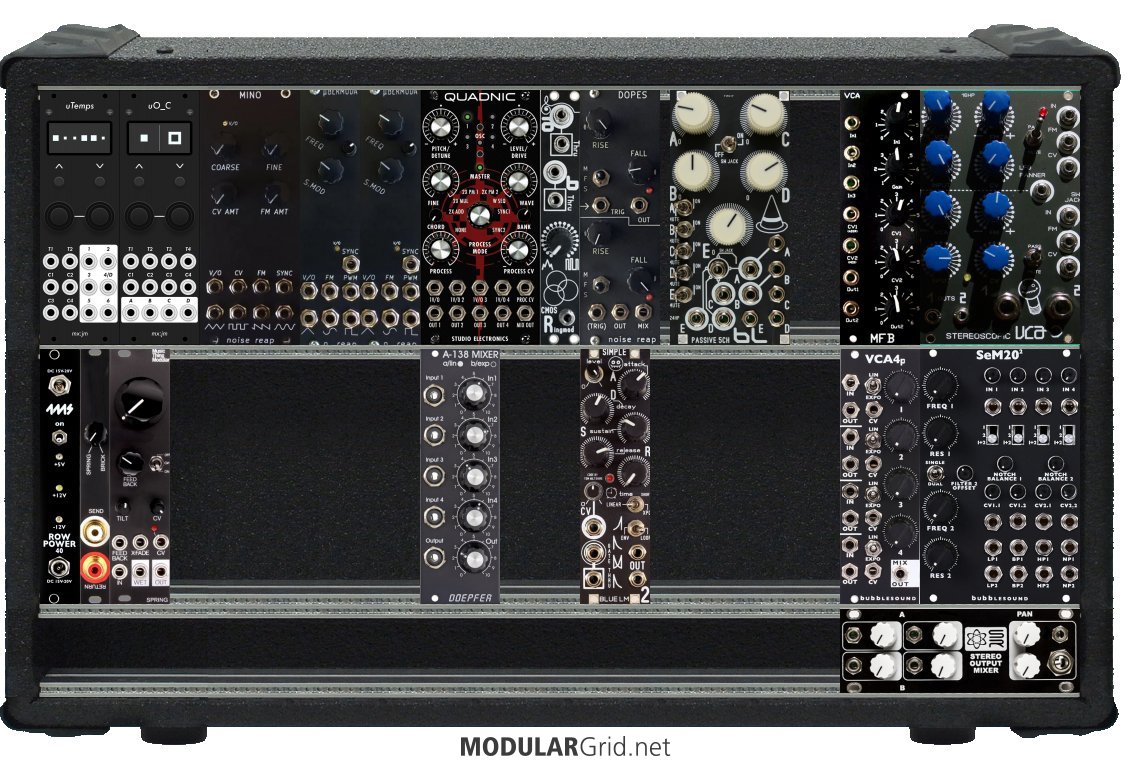I'd like some input on my first setup.
All the modules here I have minus the reverb, joystic, and the two mxmxmx units. Those are currently unassembled. Also not shown is a SQ-1, a Werkstatt with CV expander and Korg's reissue of the odyssey.
My end goal for this current rack is a multitimbral synth that's chord friendly as well as being duophonic for basslines and melodies. I plan on playing the odyssey with a keyboard and using it's cv/gate out for monophonic patches for now. Eventually I'd like to get a yarns for the 4 voice allocation mode.
My long term goals with eurorack are fairly ambitious. I want to get into making generative music, as well as using my modular to process other sources like guitar, drums or other synths. Of course I'd also use it as an awesome mono synth or rudimentary poly synth. On top of all that I'd like to do this without spending a fortune. The case I've built myself and I'm looking to assemble DIY modules.
Where should I go from here? I have about $600 left to finish this rack. Should I invest in some more modules or should I get a semi modular to augment what I currently have?
I know I'm lacking a good LFO (the werkstatt has one I can use for now) a S&H, and a multiple. Logic and line in/out come in 1u tiles so I'll be making some of those. The SQ-1 covers my need for a sequencer and clock for now. What other utility functions should I get?
Thanks in advance!


